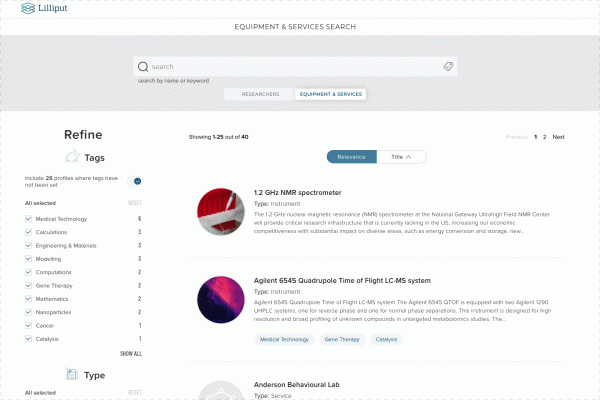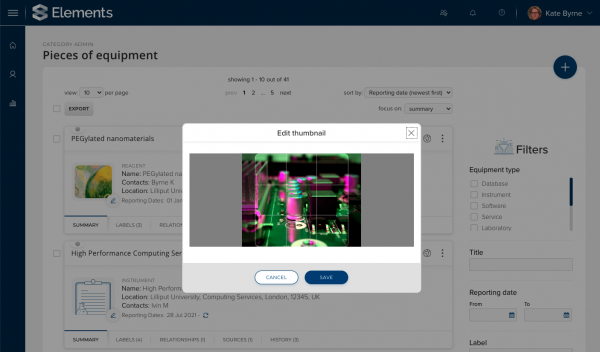Symplectic Elements lets your researchers and faculty easily identify and claim publications and other research outputs to build up their expert profile, highlighting what they do best and making sure that they – and you – are recognised for all the scholarly activities carried out across your institution.
These profiles can be internally available only, helping to drive collaboration on campus, or can be transformed into public portals via our Discovery Module, where they act as a window into your organisational talent, outputs, and areas of expertise and influence. These public portals can be used to raise the profile of your institution; help attract academic talent, commercial partnerships or funding opportunities; and drive innovation through transparency and collaboration. For example, the Ohio Innovation Exchange portal is successfully furthering economic development and intellectual advancement across Ohio and the globe.
 We have recently introduced Equipment Profiles in order to let organisations showcase other institutional assets, whether that be instruments, facilities, databases, collections, or services – all within the same dedicated search experience that visitors are accustomed to.
We have recently introduced Equipment Profiles in order to let organisations showcase other institutional assets, whether that be instruments, facilities, databases, collections, or services – all within the same dedicated search experience that visitors are accustomed to.
Equipment Profiles let organisations promote research equipment, facilities & services to maximise the use of these valuable resources, which often have little cross-campus visibility and as a result are under-utilised. Raising this visibility can also open up potential new revenue sources, helping to foster meaningful connections and collaborations with industry partners and other research organisations.
Profiles can be linked to other related records, such as People Profiles (to help researchers identify the correct person to contact about gaining access or training), grants that have utilised that piece of equipment, and/or research outputs that have been enabled through that use. Visitors to the site can easily explore how each piece of equipment (or facility or service) connects to the organisation’s research through the links between equipment records, profiles, publications and grants. By highlighting the ways in which equipment or facilities have contributed to research we hope to help drive opportunities for even more significant partnerships, collaborations and discoveries.
 Thumbnail images can be added to make profiles more visually compelling and help interested parties browse more easily in order to find what they need.
Thumbnail images can be added to make profiles more visually compelling and help interested parties browse more easily in order to find what they need.
Organisations can utilise different customisable tag schemes for their Experts and Equipment search experiences to aid discoverability, and configure label-based filters to help visitors refine results to locate relevant resources as easily as possible.
We’re very pleased to have rolled out Equipment profiles to three of our Symplectic Elements clients over the past month: Ohio Innovation Exchange, Victoria University of Wellington, and University of Technology Sydney.
Since purchasing the Discovery Module, Victoria University of Wellington have led the way in data completeness, with a highly populated and well-curated portal now showcasing both the institution’s people and a wide variety of equipment, which can be filtered by type, location and school.
To discover VUW’s expertise, visit https://people.wgtn.ac.nz/
As a statewide initiative, the Ohio Innovation Exchange currently features 2,364 equipment items sourced from across six organisations, as well as 10,909 user profiles, 40,6609 publications, and 11,772 grants. We plan to work with them further in order to allow them to showcase patent data.
To find university experts, equipment or services, visit https://www.ohioinnovationexchange.org/
University of Technology Sydney were already using Discovery to showcase their experts and, as our latest converts, are in the early stages of populating their new equipment profiles. Once profiles go live users will be able to access them at https://profiles.uts.edu.au/
If you’re interested in adding Equipment Profiles to your Discovery module, or would like a demo of Symplectic Elements in action, drop us an email at enquires@symplectic.co.uk